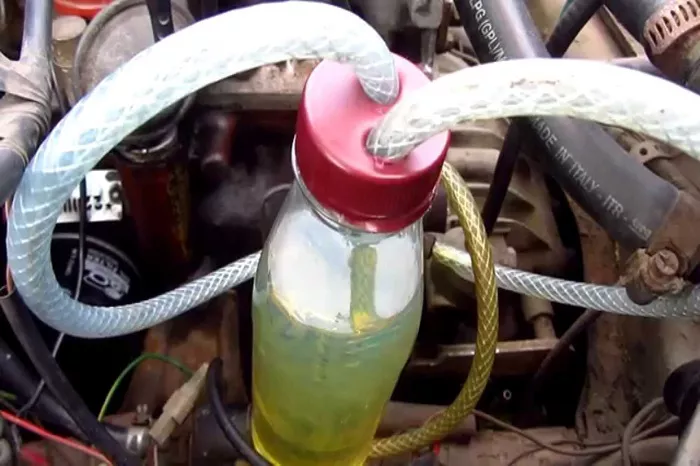Gasoline, a ubiquitous fuel powering much of the modern world, is a substance that demands careful handling and storage. While plastic bottles may seem convenient for temporary storage or transport, using them for gasoline raises critical safety, environmental, and legal concerns. This article explores the risks associated with storing gasoline in plastic containers, the potential alternatives, and the best practices for safe handling and storage.
Understanding Gasoline
Gasoline, also known as petrol in some regions, is a volatile liquid derived from crude oil through refining processes. It serves as the primary fuel for internal combustion engines in automobiles, motorcycles, lawnmowers, and other machinery. Gasoline is highly flammable and emits vapors that can ignite at relatively low temperatures, making it essential to handle and store it with extreme caution.
Risks of Using Plastic Bottles for Gasoline
1. Material Compatibility
Plastic bottles are designed for various purposes, but they are generally not suitable for storing gasoline over the long term. Gasoline contains additives and compounds that can degrade certain types of plastics, leading to chemical reactions that weaken the bottle structure. Over time, this degradation can cause leaks or ruptures, posing significant safety hazards.
2. Fire and Explosion Hazards
Gasoline emits flammable vapors that can accumulate in poorly ventilated spaces. Plastic bottles are not equipped to prevent the buildup of static electricity, which can ignite gasoline vapors and cause fires or explosions. The risk is exacerbated when bottles are not specifically designed to store flammable liquids safely.
3. Environmental Impact
Improper storage of gasoline in plastic bottles can lead to environmental contamination. Leaks or spills from degraded bottles can seep into soil, groundwater, or surface water sources, posing risks to ecosystems and human health. Responsible storage practices are crucial to prevent environmental damage.
4. Legal and Regulatory Issues
Many jurisdictions have regulations governing the storage and transportation of gasoline. These regulations often specify the types of containers that can be used, labeling requirements, and safety precautions. Using inappropriate containers like plastic bottles may result in fines or legal consequences, as well as potential liability for any damages caused by improper storage.
See also: Best 5 Places To Store Gasoline
Alternatives to Plastic Bottles
1. Approved Gasoline Containers
Approved containers for gasoline storage are typically made of metal or specially formulated plastics that are resistant to chemical degradation and static electricity buildup. These containers are designed to safely store and transport gasoline, reducing the risks associated with using improper containers.
2. Portable Gasoline Cans
Portable gasoline cans are available in various sizes and are designed with features such as spill-proof spouts, flame arrestors, and pressure relief valves. These cans are compliant with safety regulations and provide a safer alternative to plastic bottles for storing and transporting gasoline.
3. Safety Considerations
When handling gasoline, whether transferring it from one container to another or refueling equipment, safety must be the top priority:
Ventilation: Always handle gasoline in well-ventilated areas to prevent the buildup of flammable vapors.
Static Electricity: Ground both the container and yourself to dissipate any static electricity before transferring gasoline.
Spills and Leaks: Immediately clean up any spills and inspect containers for leaks before storage.
Labeling: Clearly label containers with the contents to prevent accidental misuse.
Best Practices for Safe Gasoline Handling and Storage
1. Storage Location
Store gasoline in a cool, dry, well-ventilated area away from direct sunlight and sources of heat or ignition. Avoid storing gasoline indoors unless in approved containers designed for indoor storage.
2. Container Maintenance
Regularly inspect gasoline containers for signs of wear, degradation, or damage. Replace containers that show signs of cracking, swelling, or other structural issues that could compromise their integrity.
3. Emergency Preparedness
Have a fire extinguisher rated for flammable liquids nearby when handling gasoline. In case of a spill or fire, know how to respond quickly and effectively to minimize risks.
4. Disposal of Gasoline
Dispose of old or contaminated gasoline properly according to local regulations. Never dispose of gasoline by pouring it onto the ground, into drains, or into regular waste bins.
Conclusion
While plastic bottles may seem convenient for short-term gasoline storage, they are not designed to handle the inherent risks associated with this volatile liquid. Using approved gasoline containers and adhering to safety regulations are crucial steps to mitigate the potential for accidents, fires, and environmental harm. By understanding the risks, choosing appropriate containers, and following best practices for safe handling and storage, individuals can ensure they use gasoline safely and responsibly in their everyday lives.
Related topics:
Top 5 Reasons Why Gasoline No Longer Smells

